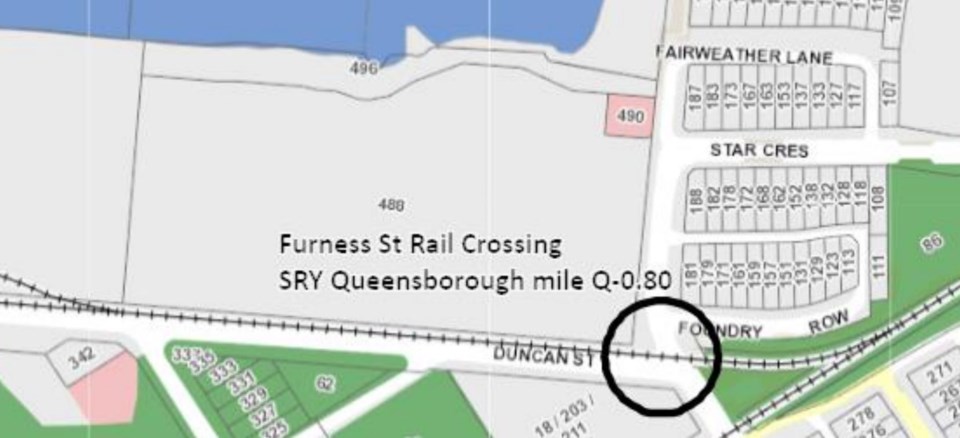Whistles will no longer be required by trains passing through one of the rail crossings in Queensborough.
At its May 27 meeting, city council passed a resolution directing that train whistles not occur in the area of the Furness Street at-grade crossing near Duncan Street at SRY Queensborough Spur Mile 0.80 in New Westminster. The action is being taken in accordance with the Railway Safety Adopted Provisions Regulation B.C. and the Railway Safety Act (Canada).
“I don't have anything to say other than just like a big cheer and a round of applause,” said Coun. Tasha Henderson.
Henderson said staff deserve high-fives and pats on the back for being able to sign off on whistle cessation at this crossing.
“I know it's not the end of this work but sometimes we need to stop and celebrate the successes in all their quiet whistle-free glory,” she said. “So, I just wanted to say congratulations. Good work.”
In a May 6 report to council, staff provided updates about the status of whistle cessation at rail crossings across New Westminster. At that time, staff reported that Southern Railway of BC (SRY) had provided final sign-off for whistle cessation at this crossing and a resolution was being prepared for presentation to council at a future meeting.
Monday’s staff report outlined some of the technical requirements that were needed to achieve whistle cessation at this crossing and have been completed by the city. These upgrades include: Furness and Duncan Street intersection re-alignment; improved sight lines; installation of a three-way stop at the Furness and Duncan Street intersection; installation of an active railway warning system; installation of a separated pedestrian rail crossing with maze barriers and fencing; installation of fencing to prevent trespassing into the rail corridor; installation of Look Listen Live and Look For Trains decals on the pedestrian path; and installation of hatching on the road surface identifying areas where motor vehicles should not be queuing.
Upgrades required to achieve whistle cessation don’t come cheap.
Lisa Leblanc, the city’s director of engineering, said the rail crossing safety equipment installed at Furness Street was delivered by the developer of the adjacent housing development, Anthem Properties, as a condition of its development approval.
“The cost for the crossing was likely in the order of $550,000 to $600,000,” she said in an email to the Record. “We do not typically receive final cost detail for projects that are delivered by third parties.”
Now that council has passed a resolution that whistles should not be used at this crossing, staff will forward a copy of the resolution to SRY and Technical Safety BC.
According to a staff report, within 30 days of receipt of the resolution, SRY must issue special instructions under the Canadian Rail Operating Rules to eliminate whistling at the Furness and Duncan crossing (subject to legislated exceptions) and notify Technical Safety BC and the city of the effective date of whistling cessation no later than 30 days after the day whistling stops. The report noted that Technical Safety BC could order train whistling to start again at this crossing if the city and SRY don’t maintain the crossing according to legislated requirements.



